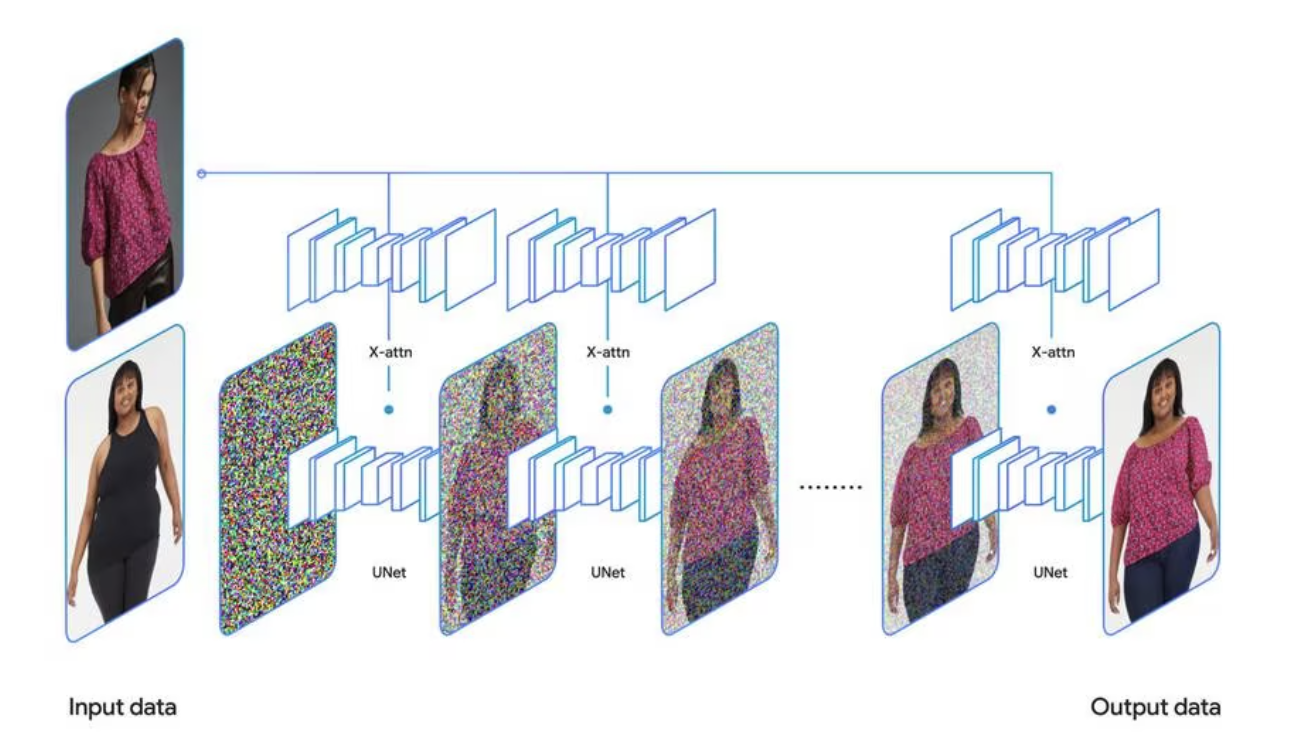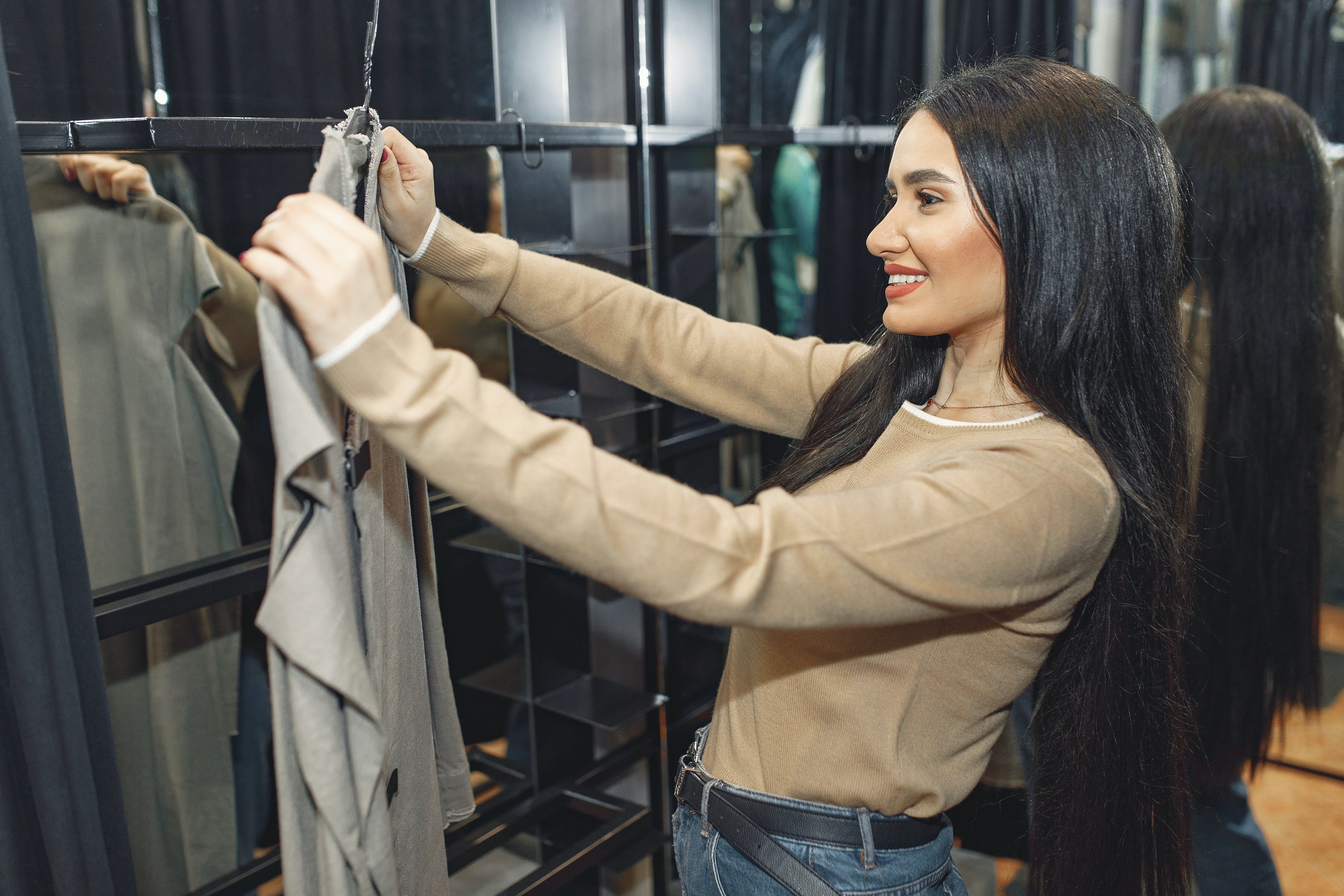Can Generative AI Solve Virtual Clothing Try-Ons?
Google is trying to revolutionize online shopping with its groundbreaking Generative AI virtual try-on feature. Say goodbye to uncertainty and hello to a diverse, inclusive, and incredibly realistic shopping experience. Here’s why it could reshape the way we shop for clothing online.
Image from google
The landscape of online shopping is evolving, and technology continues to play a pivotal role in enhancing the consumer experience. One of the persistent challenges faced by fashion start-ups that only sell online is the inability of customers to physically try on products before making a purchase.
In a bid to revolutionize this aspect of e-commerce, Google has taken a bold step forward with its innovative use of Generative AI for virtual try-on. This groundbreaking feature could bridge the gap between the digital and physical worlds. It allows shoppers to envision how a garment will look and fit on a diverse range of models.
The Evolution of Virtual Try-On:
Virtual try-on technology has been a tantalizing prospect for years. It promises to provide customers with the confidence they need to make informed purchase decisions.
Despite numerous attempts by various companies, this technology has struggled to gain widespread adoption. Some high tech developers, like Google, believe it has the answer. That solution would be Generative AI.
The company's latest announcement introduces a feature that goes beyond simply overlaying digital garments on user-provided images. Instead, it leverages advanced AI techniques to create highly realistic simulations of how clothing items will drape, fold, stretch, and even form wrinkles and shadows on different body types.
The Power of Generative AI:
Google's approach to virtual try-on is rooted in Generative AI, a cutting-edge technology that has powered some of the most impressive AI image generators to date. The concept centers around a technique known as diffusion, which involves adding "noise" to an image until it degrades. Then it reverses the process to reconstruct a new image.
In Google's application, this technique is employed using two images—one of a model and another of a garment. These images are fed into a neural network, which uses algorithms to generate a lifelike image of the model wearing the chosen garment.
This process results in a level of realism that has eluded previous attempts at virtual try-on. It may be the solution that can make virtual try-on an everyday feature.
A Diverse and Inclusive Shopping Experience:
One of the most remarkable aspects of Generative AI’s virtual try-on feature is its commitment to diversity and inclusion. Users are given the opportunity to select from a range of models with various skin tones, body shapes, and ethnicities.
This approach not only enhances the accuracy of how a garment will look on different individuals but also celebrates the beauty of diversity in the fashion industry. The inclusion of sizes spanning from XXS to 4XL further reinforces the dedication to accommodating a wide array of body types.
Industry Impact and Future Prospects:
Google’s success with Generative AI, and its entry into the virtual try-on arena marks a significant turning point. With its vast reach and resources, the tech giant has the potential to reshape the e-commerce landscape.
Beyond simply helping customers visualize their purchases, this technology could have far-reaching implications for the retail industry as a whole. The high costs associated with product returns have been a pressing concern for brands, particularly smaller fashion start-ups with limited resources.
By reducing the uncertainty surrounding fit, virtual try-on powered by Generative AI could significantly curtail return rates. This offers a win-win situation for both retailers and consumers.
As e-commerce continues to evolve, technological innovations like Generative AI are reshaping the way consumers interact with products online. This groundbreaking virtual try-on feature represents a leap forward in bridging the gap between the digital and physical shopping experience.
By utilizing advanced AI techniques to create highly realistic simulations, Google is setting a new standard for virtual try-on technology. With its commitment to diversity and inclusivity, along with the potential to reduce return rates, this innovation holds the promise of transforming the way we shop online.
The fashion industry is eagerly embracing new immersive and innovative technologies. It is clear that the future of online commerce is becoming more exciting and consumer-oriented than ever before.
What’s your breakthrough fashion concept? If you feel you have an idea that may have some promise, schedule a free strategy call and let's talk about it. You may have discovered a niche and a fashion product that could become a successful start-up and the fashion business of your dreams.
Stuck on product Production? At V.Mora we can help you through the entire production process from designing, to sourcing and so on through our Production Development services. If you are in need of the following Development and Production services:
Sourcing
Technical sketches
Pattern Making
Prototype making
Sample Making
Fittings
Digitizing and Grading
Marker Making
Manufacturing
Please contact us at: vmorainquiry@vmora.com
About the Author
Fashion expert, Allison Howmann, graduated from the Fashion Institute of Technology where she majored in Fashion Design and Minored in International Trade and Marketing. She has spent over 6 years in the NYC Fashion Industry utilizing her Design and Marketing skills. Allison has worked with several successful brands to help create their winning fashion development, small business operations, and sales and marketing strategies. You can find her creating original content on the V.Mora blog and the V.Mora Instagram.



